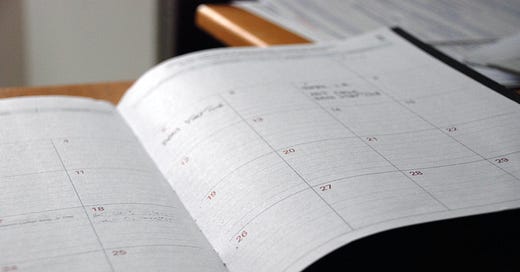Changing body composition requires managing energy balance in line with your objectives over a sustained period. For most people, the timeframe required to achieve their goals is anywhere from six weeks to six months, depending on the total change required and what is an adhereable way to get there.
We need to break this objective into smaller segments that can be measured and optimised on a more frequent basis. For most people, daily and weekly targets are the most common ways to manage nutrition intake.
There are outliers such as athletes, who will manage nutrition in longer segments of 2-4 weeks that are typically aligned with their training blocks. However, for the general population client, a daily or weekly segment is the best place to start.
Most of my clients work towards weekly nutrition targets. However, the majority also started using daily targets before making the transition.
Today, I’m going to run through the benefits of each to help you determine where is the best place to begin.
Daily targets
Daily nutrition targets are the simplest way to manage nutrition intake. A structure is developed and then repeated each day until the goal is achieved.
It’s important to note that nutrition targets don’t necessarily mean a target energy intake (i.e. calories). They often include targets of a certain macronutrient (i.e. protein), food groups (i.e. fruit and vegetables) or even avoiding certain foods or habits (i.e. lollies or snacking).
The target itself will depend on the individual, their objectives and their current routine.
Just because you’re working towards the same target daily doesn’t mean you have to eat the same food daily. There is still room for flexibility while still achieving most targets.
It’s hard to generalise who daily energy intakes are best suited to as it’s individualised. Most clients use them to get started before transitioning to weekly or fortnightly targets with more flexibility. However, some prefer the daily targets and stick with them long term.
One of the benefits of daily targets is they can be tested more frequently. You might try out a new approach and find that you’re consistently hungry at around 3 pm each day.
At the end of the week, you have seven days of data to support this, so you rearrange your intake so there’s more food earlier in the day at lunch and/or breakfast to see if this makes a difference.
This is especially handy when starting out and establishing what is most adhereable for the individual. Once there’s a solid understanding of what works for you, then it’s easier to move into longer targets
Weekly targets
Weekly targets focus on intake over a longer period of time and therefore allow more flexibility than daily targets. For example, instead of eating 2000 kcal daily, it’s 14,000 kcal per week.
You might eat less Monday to Friday (1800 kcal/day) while your routine is relatively steady during the work week. On the weekend, you can eat a bit more food while making the same total weekly intake (2500 kcal/day).
This approach tends to work well for people who have established routines and know what works for them, as the flexible approach can minimise disruptions to their lifestyle. These people are also adept at sticking to the more challenging days that allow for flexibility in the plan.
Keep in mind that it can be easy to take advantage of the flexibility without balancing it out at some point. For example, eating 2500 kcal/day on weekends but still doing 2000 kcal/day on weekdays won’t get the above results.
One of the challenges of the flexible intake is it requires the discipline to adhere to the lower intake days while also not overdoing it on the higher intake days. This can take a while to get used to, especially when there hasn’t been a lot of nutritional structure in place for a while.
A more flexible intake is what most people are working towards in the long term. However, it’s not always the best place to start.
This doesn’t mean you’re stuck with daily targets long term. I’ve had plenty of clients work towards daily objectives for a couple of weeks while they stabilise intake and then transition to weekly targets for the long term.
Getting started
Daily targets are great for testing what works and building a structure that suits you. It’s a bit more rigid and can get in the way of your normal routine at the beginning, but it’s worth the time and effort if you gain useful strategies for the long term.
Weekly targets are popular over the long run, but they can take a bit more time to adhere to. Starting out with shorter targets, be that daily or bi-weekly can be a useful transition plan while getting started.
If you’re unsure where to start, just pick one and see how it goes. So long as you’re open to making changes if it doesn’t work, you will never waste time if you learn something from the experience.
Q&A
If there is anything fitness and nutrition related that you are trying to get your head around, post it below or reply to this email and it will go straight to my inbox. All questions are posted without names unless you specify otherwise.




